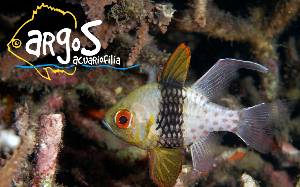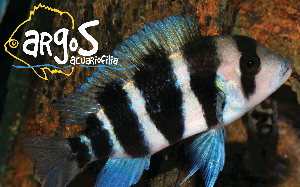Notas acerca del Trichogaster leeri
Autor: Jose Maria Cid RuizResumen
Una de las más atrayentes especies de anabántidos es sin duda alguna el “Gourami Perla” (actualmente Trichopodus leerii), huésped habitual del acuario comunitario, al que suele aclimatarse con facilidad. En este artículo, José María Cid Ruiz, nos describe los aspectos más reseñables del mantenimiento y reproducción de esta especie. Así como, los detalles de alimentación de las larvas y tiempos de desarrollo hasta la fase alevín. El autor nos refiere multitud de detalles, tales como que: “en aguas ácidas y muy cálidas (ph = 6,6; T = 28 – 30ºC), los machos de T. Leeri construyeron siempre sus nidos en presencia directa de la hembra y, en esta conducta, he podido observar que se apartan en cierta medida de los modos que tengo observados en el género Betta. Dado que, en este último, el macho se ve siempre estimulado a la construcción de nido con la simple visualización a través de un cristal de una hembra, sin tener acceso a un contacto directo. Sin embargo, los machos de T. leeri, han reiniciado la reconstrucción del nido en las diversas ocasiones, si y sólo si, la hembra, era sumergida de nuevo en su departamento, a pesar de haber disfrutado de una perfecta visión de la misma en los días precedentes.
Abstract
One of the most attractive species anabantids is undoubtedly the «Pearl Gourami» (currently Trichopodus leerii), regular guest of the community aquarium, which tends to acclimate easily. In this article, José María Cid Ruiz, describes the most notable aspects of the maintenance and reproduction of this species. As well as, the feeding details of the larvae and development times up to the juvenile phase. The author tells us a multitude of details, such as: “in acidic and very warm waters (ph = 6.6; T = 28 – 30ºC), the males of T. Leeri always built their nests in the direct presence of the female and in this behavior, I have been able to observe that they deviate to a certain extent from the ways that I have observed in the genus Betta. Since, in the latter, the male is always stimulated to build a nest with the simple visualization through a glass of a female, without having access to direct contact. However, the males of T. leeri have restarted the reconstruction of the nest on various occasions, if and only if the female was submerged again in his department, despite having enjoyed a perfect view of the female in the preceding days.




